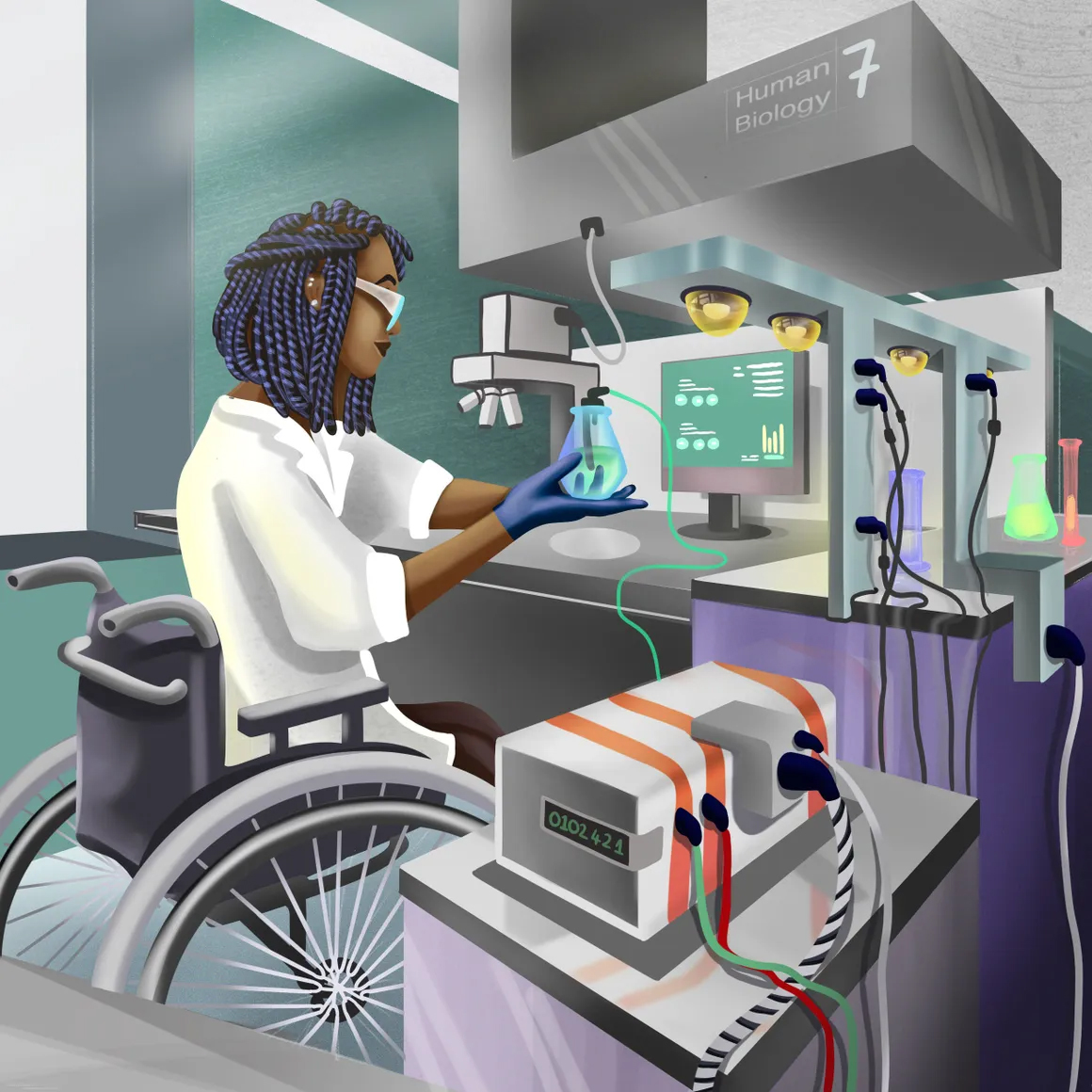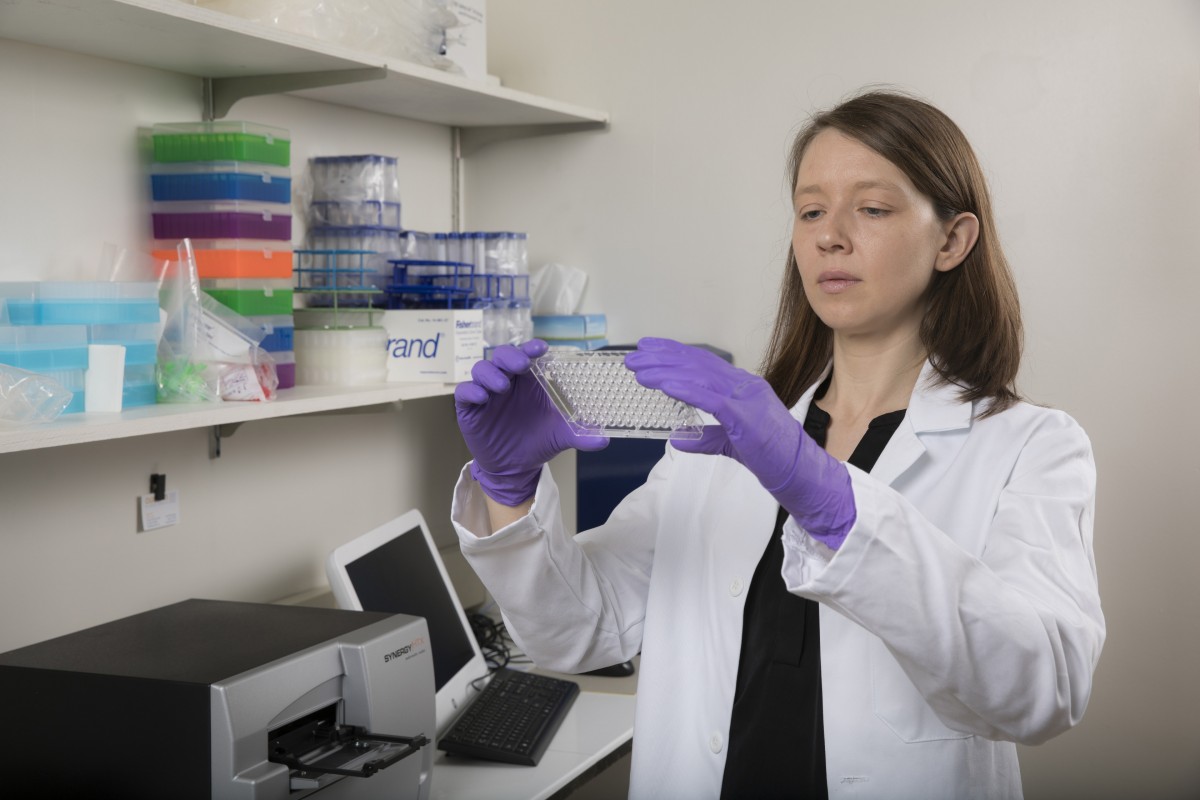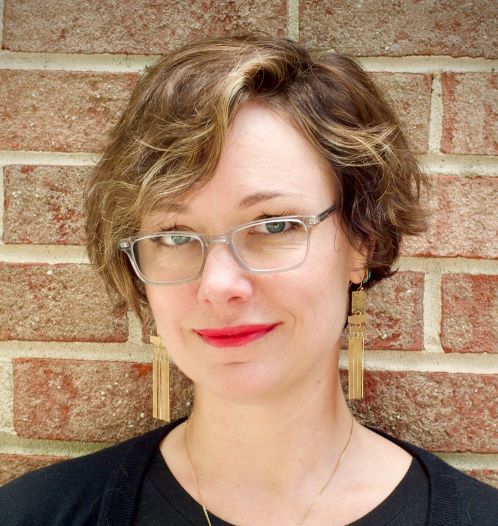Eye on inclusion: Making science more accessible to people with disabilities

The pandemic was frightening and devastating for individuals with disabilities, presenting an increased risk of death when compared to the general population. But it presented opportunities, too.
It prompted workplace changes that proved beneficial to some people with disabilities in science, technology, engineering, math and medicine (STEMM), but there’s fear that these gains will be rolled back, according to Binghamton University Associate Professor of Anthropology Katherine Wander and University of New Mexico Associate Professor of Anthropology Siobhán Mattison.
“We’re increasingly hearing about how nice it is to ‘all’ be together again, as well as calls to put the pandemic behind us and increasingly strident demands for pre-pandemic ‘normal,’” Wander said. “We are worried that lessons learned during the pandemic will be lost.”
They outlined the situation and the framework for potential solutions in “Community voices: Broadening participation in science, technology, engineering, mathematics, and medicine among persons with disabilities,” which appeared in a recent issue of Nature Communications.
Co-authors in addition to Mattison and Wander include Logan Gin of Brown University’s Sheridan Center for Teaching and Learning, Allistair Abraham of George Washington University’s Department of Pediatrics, Megan Moodie of the Anthropology Department at the University of California – Santa Cruz, and Feranmi Okanlami of the University of Michigan’s Family Medicine, Physical Medicine and Rehabilitation program.
Every author has a disability that they disclosed in the article, ranging from epilepsy and neuromuscular disorders to dwarfism and paralysis. The goal behind this disclosure, according to the authors, was to let the readers know the reality of the problem and demonstrate some of the variation that falls under the umbrella of disability.
It can be intimidating to disclose a disability, as people may perceive it as a weakness that makes the individual unable to “hack it” in STEMM fields, Mattison and Wander acknowledged. Those with less-visible disabilities are even encouraged not to disclose them to avoid discrimination, which further limits representation and exacerbates the cultural problems that make STEMM fields difficult for people with disabilities to begin with. Out-of-date laboratory design and poor infrastructure maintenance can present obstacles for individuals who use wheelchairs, for example, while a culture dependent on long hours and grueling fieldwork may prove difficult for people with chronic diseases or mental illness.
The Americans with Disabilities Act and similar approaches in other countries have offered a framework for access. The problem with the current model, however, is the substantial effort that goes into determining who is disabled “enough” to warrant an accommodation, as if inclusion were a scarce resource, the authors said.
While intended primarily as public health measures, workplace accommodations prompted by the pandemic — remote work, flexible scheduling and online and hybrid conferences, for example — unintentionally aided people with disabilities, prompting new ways to teach, conduct research and network that helped level the playing field. In fact, these solutions were among those recommended by disability advocates for years.
“It turns out that some people with disabilities were better able to work and to participate in collaborations and scholarly conferences,” Mattison said.
Flexibility, accommodation and modification
The paper draws on insights from disabilities studies, an interdisciplinary field of research that explores the ways that disabilities are created by social processes as well as biological ones. Many people within STEMM are unaware of disabilities studies’ insights and can fail to see these social dimensions, the authors said.
The dynamics of exclusion on the basis of disability also overlap with other exclusionary dynamics, such as those based on sex, gender, sexual orientation, race, ethnicity or socioeconomic status. While each type of exclusion has elements in common, they also have their own unique dimensions, the authors acknowledge.
Wander points to the commonalities among experiences of exclusion to consider how they might best be mitigated. Working from home, for example, not only benefits some people with disabilities, but also those from minority racial or ethnic groups, some of whom found that remote work alleviated much of the bias they experienced in the workplace. That being said, not everyone finds remote work accessible, as it depends on decent Internet access, among other factors. In short, there is no single, simple solution that will increase inclusion for any one group.
Instead, the authors advocate an approach based on three pillars: flexibility, accommodation and modification (FAM).
Providing more flexibility in the workplace will expand the contributions of people with disabilities and others who face various constraints, such as the need to provide care for family members. When broad flexibility isn’t possible or enough, accommodations should be available to help people achieve their role’s core functions. Modification of work duties can also help STEMM retain the insights and efforts of people whose disabilities sometimes or persistently impede their ability to work in positions that are not designed for them.
Adopting FAM strategies, however, involves changing long-standing practices and could involve some financial costs to institutions. However, the benefits to science, students and patients are likely to be substantial, the authors say.
Ultimately, the FAM approach can benefit everyone. While someone may not be considered disabled today, injuries, illness and aging may change their circumstances in the future. The phenomenon of long COVID, the authors point out, reminds us that no one is more than one illness away from lasting disability.
“Inclusion is a proactive responsibility. If we’re going to say that everyone deserves a seat at the table, then we have to make sure that places are set for everyone,” Mattison said.
Inclusion doesn’t just speak to social concepts like equity and fairness; it’s also good science. People with disabilities may offer valuable perspectives that may otherwise be absent in STEMM fields, the authors point out.
“As with other realms of diversity, we have likely underestimated what we have lost by narrowing participation. Science advances both by asking questions and by answering them, and our life experiences often shape the questions we ask, and the creativity we bring to answering them,” Mattison said. “We don’t know what questions haven’t been asked because people who are neurodivergent or who have physical disabilities or chronic diseases haven’t always been a part of the asking.”


